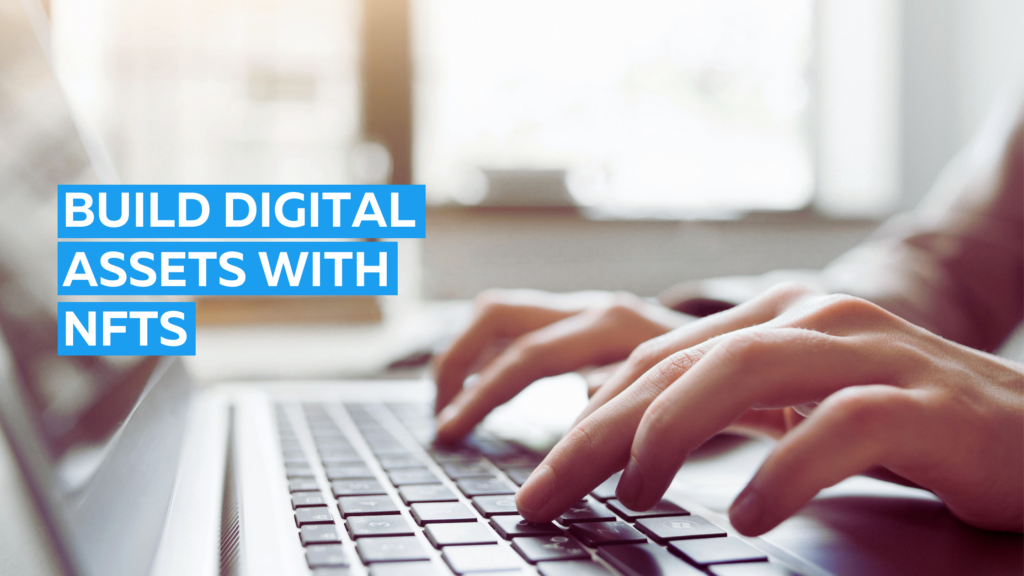How can a writer use NFTs? Let’s paint a picture first.
Imagine you refurbish great furniture for a living.
You re-create a desk that gets you into your flow, or a chair that transports you to another world when you pick up a good book.
All the hard work you do gets rewarded through a sale.
But then that’s it. You need to find another opportunity the next day and do it again.
Wouldn’t it be fantastic if you could make a living long after you’ve created something?
Let’s go back to furniture.
You sell a magnificent wooden cabinet to a bulk buyer. When she sells it in her store, you get a percentage.
Years later, when that customer decides to sell it on Facebook Marketplace, you get a piece of that sale. Then, when that buyer rents out their condo and a tenant uses your cabinet, you get paid too.
Thanks to Web 3.0, writers can create a new business that serves them long after creation.
Digital writers can start utilizing NFTs for their writing.
Writers can own their work and create a portfolio of value through NFTS with articles, scripts, landing pages, and other forms of content.
Utilizing NFTS for your work isn’t about getting royalties or commission. Instead, it’s the opportunity to productize your creation as a writer and allow your audience to invest in you too.
While you can use NFT technology with clients, we’ll focus on ideas on how you can promote and create NFTs for your audience.
Let’s Talk About Your Audience
When something new and exciting pops up, people get lucky. We see someone create JPEGs of a monkey or abstract image, and they ride the clouds of success. It inspires us, and we sometimes think that we can go viral by creating something and hitting publish. But that’s rare, and there’s no such thing as overnight success when you research how someone got to where they are.
Digital writers need to invest in their personal brand and audience. When they build their influence on social media, their website, email list, and online communities, they increase the value of their creations.
Writers cannot rely on NFTs to gain exposure. They need to build and nurture an audience first. Through daily writing and networking, writers create a community around their brand that’s ready to invest in an NFT.
NFTS for Your Popular Works
NFTs thrive off exclusivity, scarcity, and brand value. If you provide all three of these as a writer, you begin to build opportunities for your assets.
The more we write, the more discoverable we are. We produce pieces of content and sprinkle value across social media platforms, publications, search engines, and the internet. Chances are, one piece of content will occasionally get more traction than usual and increase your audience reach.
These viral pieces of content are ripe for NFT opportunities.
If your audience enjoys the content and feels it added value to their lives, they’ll likely want to support you. Or they want to own a piece of that moment. NFTs give your audience a type of ownership in that popular content (or a part of it).
Ideas for NFTs
While NFTs are new, writers can research and experiment with opportunities today.
Visual artists are already enjoying the advantages of NFTs, and its proposition is straightforward. However, for writers, the idea is still abstract. How do you make an NFT out of words? How can you sell an idea you articulated and communicated to your readers?
I believe it will be more obvious one day, but I am pragmatic and like to look at the tools and opportunities we can start with today.
You can make an asset for an NFT by producing an image or screenshot of your article. By zooming out to get the entire piece on one page, you can sell a viral piece as an NFT.
You can also screen record the article as you scroll down slowly, making an NFT out of a video or converting it into a GIF.
NFTs can also include a URL, to point to the original publication of your article.
One person, or a few, can own a digital version of your work. You can also add perks to those who purchase the NFT directly from you. Picture offering a Zoom meetup to discuss the content or discount to a course you offer.
Write an NFT eBook
While you can offer your works as an NFT, there are also opportunities to publish your original work as an NFT only. For example, an eBook that can only be purchased as an NFT is a great way to get buzz for your content and generate excitement.
Limited copies help make your community exclusive. When someone is done reading it, they can sell it to someone else. The buyer gets to read the ebook next, and the last reader re-coups some of the cost. You get a percentage.
Ish Verduzco experimented with this idea when he published his eBook through an NFT. His fans got excited and could participate in something revolutionary in the online world. It became a win-win for the author, reader, and future NFT buyers.
Writers can get creative. They could sell their eBook at a premium price through an NFT, or they could sell it by chapters. Once someone finishes chapter one, they can sell it and buy chapter two. It sustains demand among the readers, and it becomes collectible knowledge.
Sell Your Artwork or Images
Writers need book covers, graphics, and images for many of their works. If they created it themselves or own all the rights, they could utilize these digital assets and offer them NFTs. For example, if you sell an eBook, offer the cover as an NFT.
Imagine yourself as a fan. Let’s say you love Moby Dick by Herman Melville and that it was published for the first time this year.
You could invest in the asset by buying a cover you believe in and supporting the author. You think it’s the most extraordinary novel of all time, and it will grow in value. As Moby Dick becomes a classic, your NFT becomes more valuable. You can show it to friends and fans and enjoy the experience.
Your readers will feel the same way about your most popular works if you build an audience. Artwork and images are a great way to get people to invest in your NFTs.
Not only is it an excellent option for you as a writer, but it also helps you tap into the thriving NFT art community. It’s another way to diversify your exposure and increase your following.
Existing art within your works is a great way to use an asset you already have.
Make an NFT Through Micro-Content
Not every piece of content will be successful. But even our worst works tend to have golden nuggets.
We can mint NFTs through one-liners. Micro-content is a condensed and short version of our exciting bodies of work.
Think tweets. You can repurpose your article and make several tweets from it. You can take a screenshot of a popular tweet and mint it as a collectible NFT. While the source is not an NFT, your micro-content lives as a monetized asset.
NFTs, the Metaverse, and other innovations of Web 3.0 give writers plenty of opportunities to thrive on the internet. While new, digital writers can start preparing and experimenting with ideas to take advantage of what the internet and online community has to offer.


